-
ORIGINAL ARTICLE10-09-2023
Independent and combined effects of lifestyle behaviors on adolescent health-related quality of life
Revista Brasileira de Enfermagem. 2023;76(4):e20220780
Abstract
ORIGINAL ARTICLEIndependent and combined effects of lifestyle behaviors on adolescent health-related quality of life
Revista Brasileira de Enfermagem. 2023;76(4):e20220780
DOI 10.1590/0034-7167-2022-0780
Views0See moreABSTRACT
Objective:
To investigate the independent and combined effects of lifestyle behaviors, including physical activity, sedentary behavior, sleep duration and food intake, in the health-related quality of life (HRQoL) of Brazilian adolescents.
Methods:
Cross-sectional school-based study, with the participation of 306 adolescents aged 14 to 18 years. A questionnaire was applied with structured questions to collect lifestyle behaviors data. Perception of the HRQoL was identified using the Kidscreen-27. The study used covariance analysis and linear regression models for statistical analysis.
Results:
Adolescents who reported ≤ 2 hours/day of screen-based sedentary behavior and sleep duration equivalent to 8-10 hours/night presented significantly higher HRQoL. Adolescents who reported joint adherence ≥ 3 healthy lifestyle behaviors demonstrated approximately two [OR=2.12] to three times [OR=3.04] more chance of presenting higher perceptions of HRQoL.
Conclusion:
Although healthy lifestyle behaviors had a positive independent effect on HRQoL, joint adherence to healthy behaviors enhances the cumulative effect.
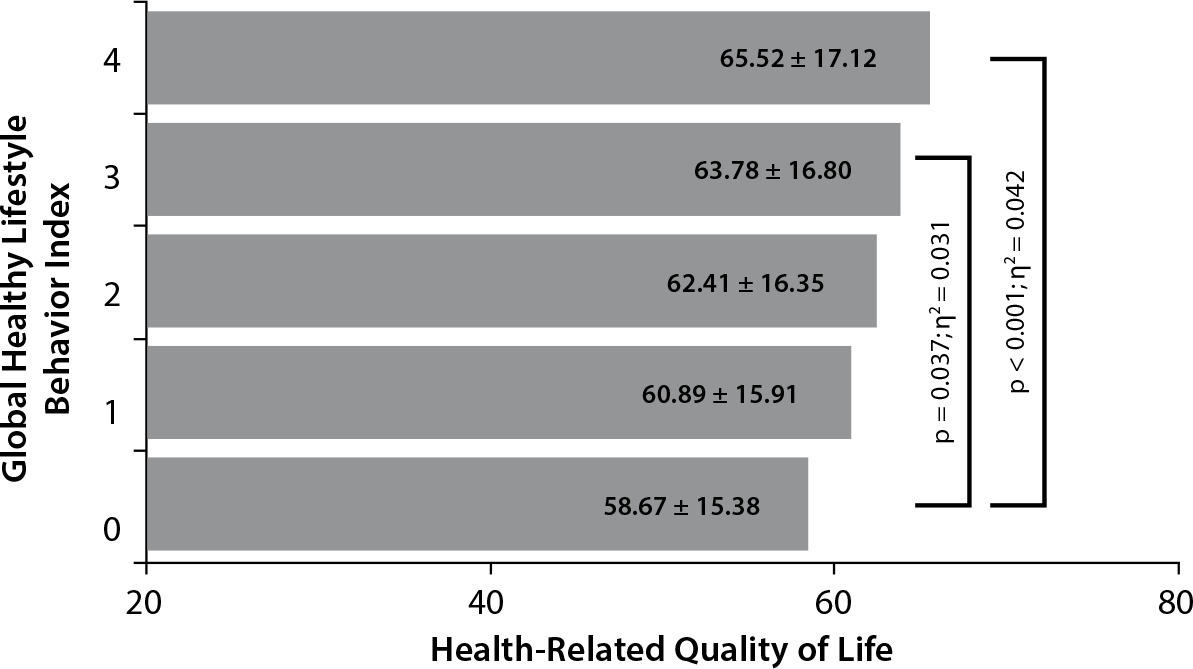
-
ORIGINAL ARTICLE10-09-2023
Health care for people with tuberculosis/HIV co-infection from the multidisciplinary team’s perspective
Revista Brasileira de Enfermagem. 2023;76(4):e20220733
Abstract
ORIGINAL ARTICLEHealth care for people with tuberculosis/HIV co-infection from the multidisciplinary team’s perspective
Revista Brasileira de Enfermagem. 2023;76(4):e20220733
DOI 10.1590/0034-7167-2022-0733
Views0See moreABSTRACT
Objective:
to know the multidisciplinary team’s perspective about the health care of people with tuberculosis and human immunodeficiency virus co-infection in relation to treatment.
Methods:
this is a descriptive-exploratory study, with a qualitative approach, carried out in a health care service in São Paulo, from May to June 2019. Semi-structured interviews were conducted with nine professionals from the multidisciplinary team. Data were processed through discourse analysis with the support of webQDA.
Results:
Two empirical categories emerged: Health care interfaces for people with tuberculosis and human immunodeficiency virus co-infection; Barriers and facilitators for health care for people with co-infection.
Final considerations:
the health-disease process in co-infection is mediated by conditions that positively or negatively interfere with treatment compliance. People’s health care goes beyond exclusively clinical assistance and requires the recognition of needs in a broad perspective.

-
ORIGINAL ARTICLE10-09-2023
Translation and validity of the Multidimensional Individual and Interpersonal Resilience Measure
Revista Brasileira de Enfermagem. 2023;76(4):e20220696
Abstract
ORIGINAL ARTICLETranslation and validity of the Multidimensional Individual and Interpersonal Resilience Measure
Revista Brasileira de Enfermagem. 2023;76(4):e20220696
DOI 10.1590/0034-7167-2022-0696
Views0See moreABSTRACT
Objective:
to translate, culturally adapt and validate the Multidimensional Individual and Interpersonal Resilience Measure to Brazilian Portuguese.
Method:
after initial translation, the pre-final version underwent rigorous cultural adaptation procedures. As a result, the final adapted version was submitted to a validity study.
Results:
adaptation procedures provided equivalence between the pre-final and the original versions in semantic, idiomatic, experiential and conceptual terms. A total of 187 older adults were included in the validity study. Exploratory factorial analysis (EFA) generated a model of five factors ((RMSEA = 0.030; TLI = 0.959; X = 151.590 p> 0.05). Final version showed adequate consistency (Cronbach’s α = 0.705) and test-retest reliability (ICC=0.835). No statistically significant correlation was found between resilience and sociodemographic and epidemiological variables assessed in this study.
Conclusion:
EMRII-BR is a valid and reliable instrument for measuring resilience in Brazilian older adults.
-
10-09-2023
Standard Operating Procedure validity on intramuscular vaccine administration in adults: a methodological study
Revista Brasileira de Enfermagem. 2023;76(4):e20220692
Abstract
Standard Operating Procedure validity on intramuscular vaccine administration in adults: a methodological study
Revista Brasileira de Enfermagem. 2023;76(4):e20220692
DOI 10.1590/0034-7167-2022-0692
Views0See moreABSTRACT
Objective:
to validate a Standard Operating Procedure on the intramuscular vaccine administration technique in adults using high frequency vibration associated with cryotherapy.
Methods:
a literature review on intramuscular vaccination practice using a vibration device associated with cryotherapy. Then, a form was created to validate the instrument, detailing the items that were assessed by judges following recommendations in the literature. Judges’ answers were assessed using the Content Validity Index, with items whose index was greater than or equal to 0.80 being validated.
Results:
twenty-five nurses participated in validity, identifying judges’ opinion regarding item relevance, clarity and accuracy. Judges validated the instrument, according to the values that remained between 0.88 and 1.0.
Conclusions:
the instrument developed and validated is a tool capable of guaranteeing safety and standardizing immunization practice in vaccine rooms.
-
ORIGINAL ARTICLE10-09-2023
Clinical supervision strategies, learning, and critical thinking of nursing students
Revista Brasileira de Enfermagem. 2023;76(4):e20220691
Abstract
ORIGINAL ARTICLEClinical supervision strategies, learning, and critical thinking of nursing students
Revista Brasileira de Enfermagem. 2023;76(4):e20220691
DOI 10.1590/0034-7167-2022-0691
Views0See moreABSTRACT
Objective:
To identify the supervisory strategies that Nursing students consider facilitators of the development of critical thinking skills in clinical teaching.
Methods:
This is a qualitative study, within the interpretative paradigm, using the focus group methodology. Eight undergraduate nursing students participated in the study.
Results:
Participants recognized the indispensability of critical thinking for professional responsibility and quality of care and highlighted the importance of using supervisory strategies adapted to their needs, learning objectives, and the context of clinical practice.
Final considerations:
This study highlights the urgent need to establish, within the Nursing curricula, clinical supervision strategies that promote critical thinking and favor the development of skills for good clinical judgment, problem solving, and safe, effective, and ethical decision-making.
-
EXPERIENCE REPORT10-09-2023
Focus group in the development of concepts for a Nursing model: experience report
Revista Brasileira de Enfermagem. 2023;76(4):e20220689
Abstract
EXPERIENCE REPORTFocus group in the development of concepts for a Nursing model: experience report
Revista Brasileira de Enfermagem. 2023;76(4):e20220689
DOI 10.1590/0034-7167-2022-0689
Views0See moreABSTRACT
Objective:
To communicate the experience of developing concepts for the construction of a care model through focus groups.
Methods:
An experience report on the development of concepts through remote focus groups with members of a research group from a public university in southern Brazil.
Results:
Focus groups were developed in which homogeneity and heterogeneity criteria were observed among participants. In addition to the concepts of the nursing metaparadigm, the concepts of care and family-centered care were developed, relevant to the nursing care model in question.
Final considerations:
Despite the challenges of conducting remote focus groups, they were suitable for the collective construction of concepts for a nursing care model, allowing the interaction of participants from different locations.
-
10-09-2023
Autocompaixão entre estudantes de enfermagem de uma Universidade Estadual da Indonésia durante a pandemia de COVID-19
Revista Brasileira de Enfermagem. 2023;76(4):e20220585
Abstract
Autocompaixão entre estudantes de enfermagem de uma Universidade Estadual da Indonésia durante a pandemia de COVID-19
Revista Brasileira de Enfermagem. 2023;76(4):e20220585
DOI 10.1590/0034-7167-2022-0585
Views0See moreRESUMEN
Objetivo:
Determinar el nivel de autocompasión e investigar las relaciones entre las variables sociodemográficas y la autocompasión entre estudiantes de pregrado de enfermería en una universidad estatal de Indonesia durante la pandemia de COVID-19
Métodos:
Este estudio utilizó un diseño transversal. Las muestras se seleccionaron mediante una técnica de muestreo aleatorio estratificado proporcional (n=260). Los datos se recopilaron utilizando una versión indonesia de la Escala de Autocompasión, que consta de 6 subescalas: bondad propia, autocrítica, humanidad común, aislamiento, atención plena y sobre identificación. Los datos se analizaron mediante análisis univariado y bivariado.
Resultados:
El 60% de los estudiantes tenían autocompasión moderada. Los estudiantes puntuaron más alto en amabilidad consigo mismos (3,93±1,02) y sobre identificación (3,58±0,94), lo que indica que a menudo intentaban amarse a sí mismos cuando sentían dolor emocional y a menudo se dejaban llevar cuando sucedió algo perturbador. Posteriormente, se encontró una correlación significativa entre la edad y la autocompasión (p<0,05).
Conclusión:
La autocompasión entre los estudiantes de enfermería debe mejorarse por medio de intervenciones como la alfabetización de la compasión, el entrenamiento en atención plena y las técnicas experienciales basadas en la compasión.
-
10-09-2023
Tradução e validação do Multidimensional Individual and Interpersonal Resilience Measure
Revista Brasileira de Enfermagem. 2023;76(4):e20220696
Abstract
Tradução e validação do Multidimensional Individual and Interpersonal Resilience Measure
Revista Brasileira de Enfermagem. 2023;76(4):e20220696
DOI 10.1590/0034-7167-2022-0696
Views0See moreRESUMEN
Objetivo:
traducir, adaptar culturalmente y validar el Multidimensional Individual and Interpersonal Resilience Measure para el portugués brasileño.
Método:
después de la traducción inicial, la versión pre-final pasó por rigurosos procedimientos de adaptación cultural. Como resultado, la versión final adaptada fue sometida a un estudio de validez.
Resultados:
los procedimientos de adaptación proporcionaron equivalencia entre las versiones pre-final y original en términos semánticos, idiomáticos, experienciales y conceptuales. Un total de 187 ancianos fueron incluidos en el estudio de validez. El análisis factorial exploratorio (AFE) generó un modelo de cinco factores ((RMSEA = 0,030; TLI = 0,959; X = 151,590 p> 0,05). La versión final mostró adecuada consistencia (α de Cronbach = 0,705) y confiabilidad prueba-reprueba (ICC=0,835). No se encontró correlación estadísticamente significativa entre la resiliencia y las variables sociodemográficas y epidemiológicas evaluadas en este estudio.
Conclusión:
EMRII-BR es un instrumento válido y confiable para medir la resiliencia en ancianos brasileños.
-
ORIGINAL ARTICLE07-08-2020
Nursing diagnosis Risk for Falls in the elderly in primary health care
Revista Brasileira de Enfermagem. 2020;73:e20180826
Abstract
ORIGINAL ARTICLENursing diagnosis Risk for Falls in the elderly in primary health care
Revista Brasileira de Enfermagem. 2020;73:e20180826
DOI 10.1590/0034-7167-2018-0826
Views0See moreABSTRACT
Objective:
to evaluate the Nursing Diagnosis (ND) Risk for Falls in elderly subjects in primary health care in the Federal District.
Methods:
a descriptive, quantitative, cross-sectional study conducted in two basic health units. Data collection included blood collection, nursing consultation and physical evaluation of 156 elderly subjects with chronic diseases.
Results:
the most prevalent intrinsic risk factors of NANDA-I were visual impairment (73.7%), impaired mobility (70.5%) and history of falls (69.9%); and extrinsic factors were the use of insufficient material in the bathroom (60.3%) and loose carpets (58.3%). The intrinsic factors that increased the risk for falls were the use of assistive devices (OR 3.50; p=0.030), impaired walking (OR 2.84; p=0.019) and cognitive impairment (OR 1.26; p=0.019); and the extrinsic factor was the use of loose rugs (OR 1.59; p=0.041).
Conclusion:
this ND has proved to be a valuable instrument for the identification of risk factors for falls in elderly subjects in primary care.
-
ORIGINAL ARTICLE07-13-2020
Predicting dimensions of clinical-functional conditions and cognition in the elderly
Revista Brasileira de Enfermagem. 2020;73:e20190162
Abstract
ORIGINAL ARTICLEPredicting dimensions of clinical-functional conditions and cognition in the elderly
Revista Brasileira de Enfermagem. 2020;73:e20190162
DOI 10.1590/0034-7167-2019-0162
Views0See moreABSTRACT
Objective:
To evaluate the predictive dimensions of clinical-functional conditions and the cognitive capacity of elderly people living at home.
Method:
Cross-sectional, population-based, analytical, quantitative study was utilized. For data collection, an instrument with sociodemographic and behavioral variables, the Functional Clinical Vulnerability Index; and, to assess cognition, the Mini-Mental State Examination (MMSE) was used. Descriptive analyzes and statistical tests were conducted.
Results:
305 elderly subjects, living at home, in urban and rural areas participated in the study. They were classified as robust (71.8%), pre-frail (22%) and frail (6.2%). As for cognition, 24.9% of them had cognitive impairment. It was shown that cognitive impairment predicts the development of functional disability.
Conclusion:
It is considered that health professionals should both act in order to maintain the functional and cognitive conditions of the robust and pre-frail elderly people and pay attention to the rehabilitation of the disabilities installed in those elderly people who are in a situation of frailty.
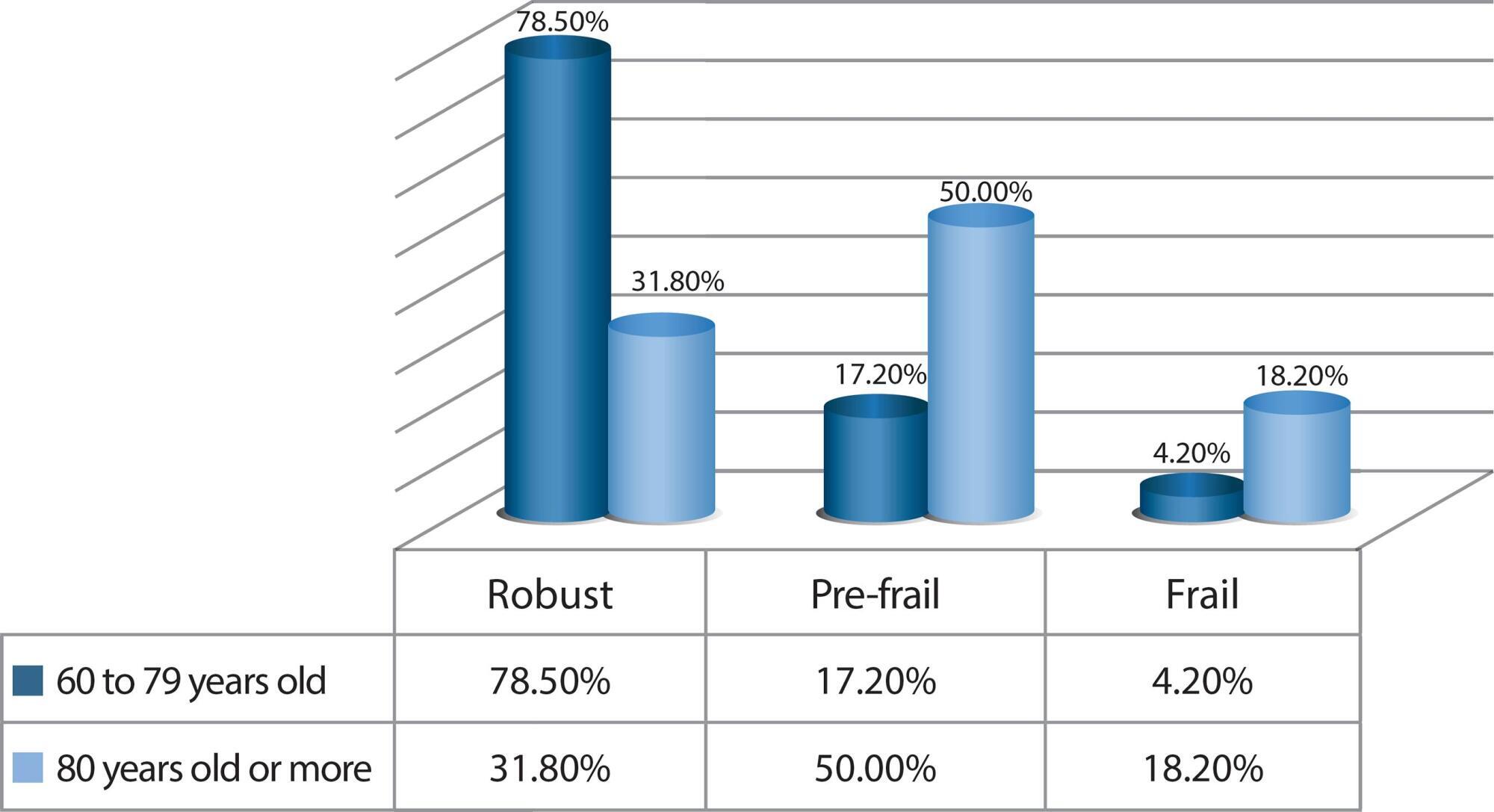
-
ORIGINAL ARTICLE07-31-2020
Educational demands of family members of children with special health care needs in the transition from hospital to home
Revista Brasileira de Enfermagem. 2020;73:e20190156
Abstract
ORIGINAL ARTICLEEducational demands of family members of children with special health care needs in the transition from hospital to home
Revista Brasileira de Enfermagem. 2020;73:e20190156
DOI 10.1590/0034-7167-2019-0156
Views0See moreABSTRACT
Objectives:
to analyze the educational demands of family members of children with special health care needs in the transition from hospital to home
Methods:
qualitative research conducted between February and June 2018, using the handbook on creativity and sensitivity dynamics, from the sensitive creative method; the participants were nine family caregivers of children admitted to a public hospital in Rio de Janeiro; the data were subjected to French discourse analysis
Results:
the educational demands were clinical, centered on the categories complex and continuous care, technological care, modified habits, medication, development and mixed care, and social, related to the supplies and rights of children
Final Considerations:
the social educational demand has emerged as a new demand to be incorporated in the care of these children. The transition from hospital to home should be progressive and have the nurse as its coordinator, with the objective of providing participatory, safe, quality care, articulated within a social network
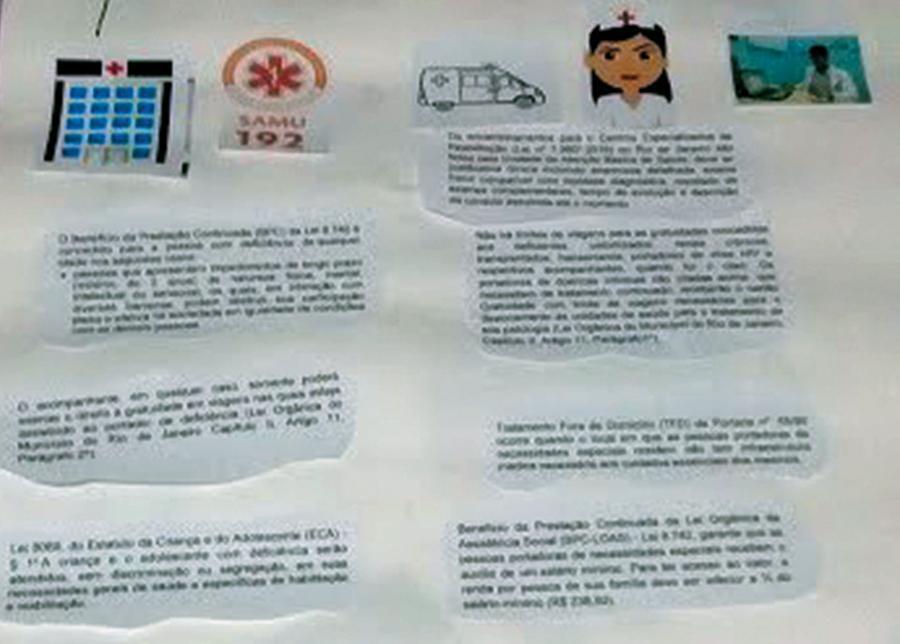
-
EXPERIENCE REPORT07-31-2020
(In)visibility of children with special health needs and their families in primary care
Revista Brasileira de Enfermagem. 2020;73:e20190071
Abstract
EXPERIENCE REPORT(In)visibility of children with special health needs and their families in primary care
Revista Brasileira de Enfermagem. 2020;73:e20190071
DOI 10.1590/0034-7167-2019-0071
Views0See moreABSTRACT
Objectives:
to discuss the (in)visibility of children with special healthcare needs and their families in the Primary Health Care scenario.
Methods:
experience report about the difficulties faced by researchers from different regions of Brazil to locate children with special healthcare needs in the scope of primary care.
Results:
the main reason for these children and their families to be “unknown” and, therefore, not assisted in PHC, is the fact that they are followed-up by institutions/outpatient clinics and specialized and/or public rehabilitation clinics, or even because they have private health insurance.
Final Considerations:
transferring care responsibility to the Primary Health Care teams to specialized and rehabilitation institutions may be related to the lack of knowledge of the care demands of this group, as well as to the relevance of care centered on rehabilitation and the specialty instead of the long-term care, one of the features of primary health care.
-
ORIGINAL ARTICLE07-15-2020
Influence of health care practices on the burden of caregiver mothers
Revista Brasileira de Enfermagem. 2020;73:e20190154
Abstract
ORIGINAL ARTICLEInfluence of health care practices on the burden of caregiver mothers
Revista Brasileira de Enfermagem. 2020;73:e20190154
DOI 10.1590/0034-7167-2019-0154
Views0See moreABSTRACT
Objectives:
to explore the influence of health care practices on the burden of caregiver mothers of children with special health needs.
Methods:
observational, analytical, cross-sectional, quantitative study. Participation of 100 caregiver mothers, who responded the following instruments: characterization instrument; Burden Interview for Informal Caregivers; Perceptions of Family-Centered Care – Parents version; Evaluation Instrument for Primary Care – Child Version. For statistical analysis, were used the Spearman’s Correlation and univariate and multivariate linear regression analysis.
Results:
the mean burden score was 47.99. There was a negative correlation between the burden and the domains of collaboration and support of the Perceptions of Family-Centered Care scale. In the multivariate linear regression model, the longitudinality variable maintained a significant relation with the burden (p = 0.023).
Conclusions:
a shared, longitudinal and integrated care between families and health services can ease the burden of caregiver mothers.
-
ORIGINAL ARTICLE08-20-2021
Resilience of family caregivers of children and adolescents in treatment of neoplasms and associated factors
Revista Brasileira de Enfermagem. 2021;74(6):e20190388
Abstract
ORIGINAL ARTICLEResilience of family caregivers of children and adolescents in treatment of neoplasms and associated factors
Revista Brasileira de Enfermagem. 2021;74(6):e20190388
DOI 10.1590/0034-7167-2019-0388
Views0See moreABSTRACT
Objectives:
analyze the level of resilience of family caregivers of children and adolescents hospitalized for cancer treatment and associated factors.
Methods:
cross-sectional study, carried out in 2018, with 62 family caregivers in a university hospital in the state of Rio Grande do Sul, Brazil. The instruments CDRisc-10-Br, SRQ20, PSS-14 and WHOQOL-Bref were used to measure resilience, minor psychological disorders, stress, and quality of life, respectively. Inferential statistics were used.
Results:
female caregivers, married, with one child and who practice some predominated religion. They were classified as having a moderate level of resilience (48.4%); with suspicion for minor psychological disorders (45%) and high level of stress (41%). In terms of quality of life, they were satisfied in the Physical, Psychological and Social Relations domains; and dissatisfied in the Environment domain.
Conclusions:
there were direct weak to moderate correlations between the level of resilience and quality of life and inversely with stress and minor psychological disorders.
-
ORIGINAL ARTICLE12-07-2020
Construction and validation of an educational gerontotechnology on frailty in elderly people
Revista Brasileira de Enfermagem. 2020;73:e20200800
Abstract
ORIGINAL ARTICLEConstruction and validation of an educational gerontotechnology on frailty in elderly people
Revista Brasileira de Enfermagem. 2020;73:e20200800
DOI 10.1590/0034-7167-2020-0800
Views0See moreABSTRACT
Objective:
to construct and validate an educational gerontechnology on frailty in elderly people.
Method:
a methodological study developed in three stages: educational video construction, validation by expert judges and elderly people. Validation was carried out by 22 judges and 22 elderly people. Educational Content Validation Instrument was used for judges and questions adapted from the Suitability Assessment of Materials questionnaire for elderly people. For validation, agreement criterion greater than 80% was considered, verified using Content Validation Index and binomial test.
Results:
the video addresses recommendations for elderly people at risk of frailty and health-promoting habits, using cordel literature. An agreement greater than 80% was verified in all items assessed by judges and the target audience.
Conclusion:
the video proved to be valid in terms of content and appearance by judges and elderly people, with the potential to mediate health-promoting educational practices in healthy aging.
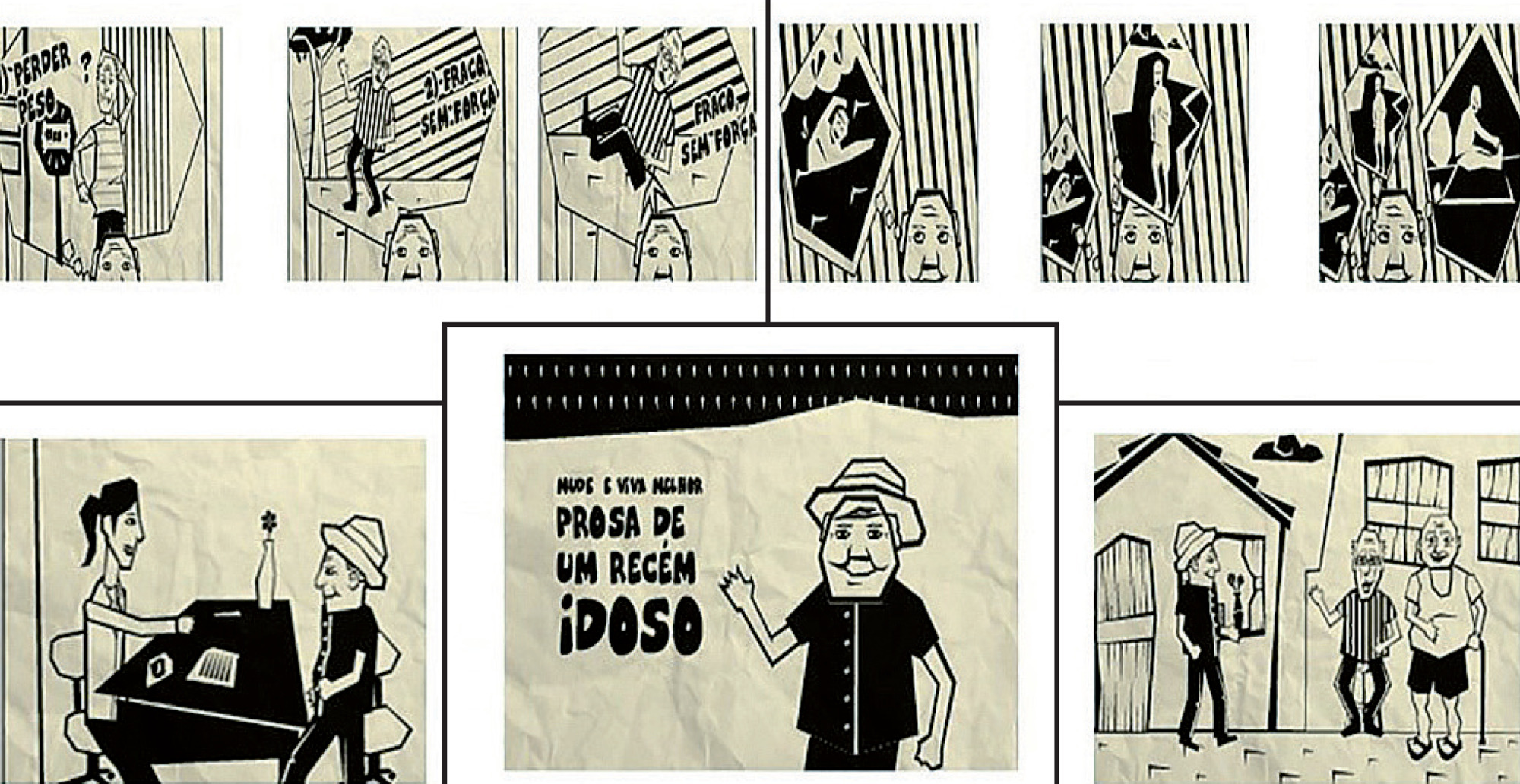
-
REVIEW07-09-2021
Nursing care for patients in post-transplantation of hematopoietic stem cells: an integrative review
Revista Brasileira de Enfermagem. 2021;74(3):e20200097
Abstract
REVIEWNursing care for patients in post-transplantation of hematopoietic stem cells: an integrative review
Revista Brasileira de Enfermagem. 2021;74(3):e20200097
DOI 10.1590/0034-7167-2020-0097
Views0See moreABSTRACT
Objectives:
to analyze the available evidence on the nursing care provided to patients after hematopoietic stem cell transplantation.
Methods:
integrative review with the search for primary studies in four databases and a virtual health library. A broad search strategy was used, including research published in English, Brazilian Portuguese, or Spanish, between 2008 and 2018, totaling a sample of 42 studies.
Results:
the studies were grouped into three categories: multiple nursing care (n=19), first-line care (n=18), and self-management of care (n=5).
Conclusions:
nursing care is critical, comprising patients’ physical, psychological and social aspects. It occurs in hospital and home contexts, mainly involving technical actions and health guidance. The evidence identified provide subsidies for decision-making; however, most studies are of the non-experimental type, indicating the need for conducting intervention research.
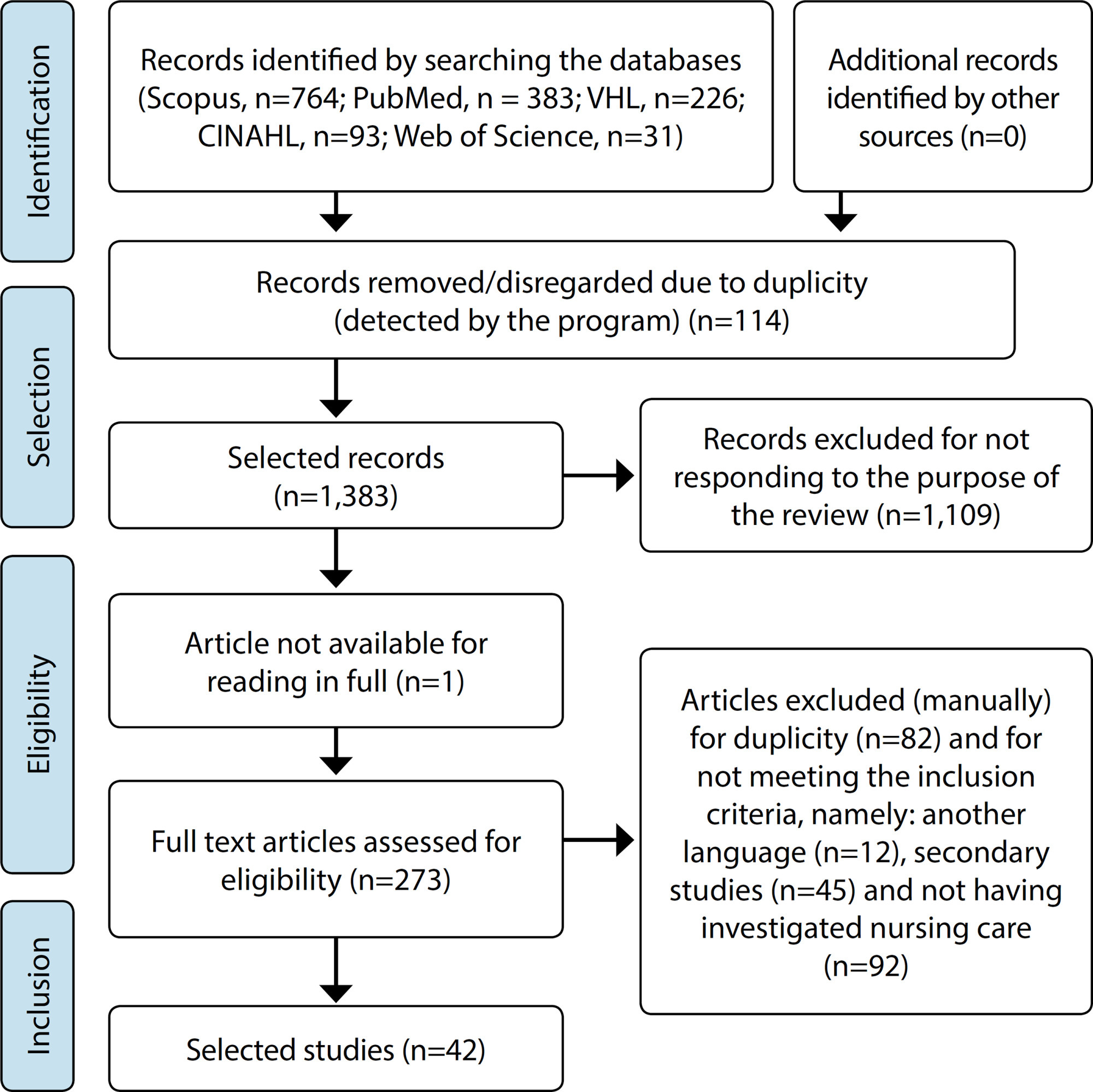
Search
Search in:
Nuvem de Tags
Adolescente (85) Atenção Primária à Saúde (239) COVID-19 (91) Criança (91) Cuidados de Enfermagem (269) Educação em Enfermagem (151) Educação em Saúde (139) Enfermagem (930) Enfermagem Pediátrica (86) Estudantes de Enfermagem (77) Estudos de Validação (131) Família (87) Idoso (208) Promoção da Saúde (99) Qualidade de Vida (104) Saúde do Trabalhador (86) Saúde Mental (145) Saúde Pública (82) Segurança do Paciente (150) Tecnologia Educacional (100)



